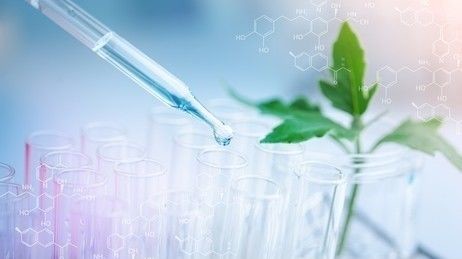Testing for Mycotoxins in Herbal Medicines
Inquiry
While herbal medicines play a unique role in disease control, health, and wellness, there is also growing concern and attention to the safety of herbal medicines caused by contamination with exogenous harmful residues. This includes the contamination of herbal medicines with mycotoxins, one of the most important factors affecting the quality and safety of herbal medicines. Mycotoxins are toxic secondary metabolites produced by fungi. Improper control and management of herbal medicines throughout the industry chain, including cultivation, processing, production, storage, and distribution, can lead to mycotoxin contamination and pose safety risks.

Proper mycotoxin testing is an important tool to prevent such problems. Lifeasible can provide mycotoxin testing for Aspergillus, Penicillium, and Fusarium, and for aflatoxins (AF), ochratoxin A (OTA), fumonisins and zearalenone (ZEA), etc.
- AFB1、AFB2、AFG1、AFG2
- OTA
- ZEA
- Patulin (PAT)
- Fumonisins B1、Fumonisins B2
- T-2 toxin
- Deoxynivalenol (DON)
- Nivalenol (NIV)
- α-Zearalenol (α-ZOL)
- Citrinin (CIT)
Testing methods
We can determine a wide range of mycotoxins in herbs, tablets, and herbal preparations simultaneously by thin layer chromatography (TLC), gas chromatography (GC), high-performance liquid chromatography (HPLC), immunological assays and rapid assays, involving instrumental analysis, chemical analysis, biological identification, and immunoassay.
- TLC. Simple and convenient. It can be used for qualitative, semi-quantitative, and auxiliary quantitative analysis of herbal mycotoxins.
- HPLC. High specificity, high sensitivity, accurate quantification, good separation, reproducibility, low minimum detection limit, and high recovery. It can be used for the simultaneous separation of a variety of mycotoxins, is easy to operate, and is suitable for analyzing large quantities of samples.
- GC. Highly sensitive, selective, accurate, and precise. It can be used to analyze mycotoxins that do not contain chromogenic or fluorescent groups in their molecules or have weak fluorescence or weak absorption.
- Enzyme-linked immunosorbent assay (ELISA). Rapid, simple, specific, and sensitive.
- Colloidal gold immunochromatographic assay (GICA). Fast, simple, and sensitive. Enables semi-quantitative/quantitative detection and detection of diversity.
- Time-resolved Fluoroimmunoassay (TRFIA). High sensitivity, wide detection range, reproducibility, and stability. Enables the detection of fungal toxins in high-volume samples with low detection limits.
Because mycotoxins are so widely distributed in nature, they can contaminate crops and herbs. The contamination of herbs by mycotoxins cannot be ignored. They are highly susceptible to these toxins from planting, harvesting, to storage and can cause serious adverse reactions when used uncontrolled. Please feel free to contact Lifeasible for a bespoke mycotoxin testing solution.
For research or industrial raw materials, not for personal medical use!
Related Services

